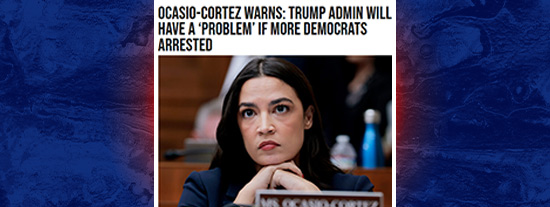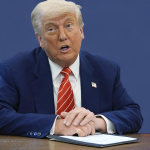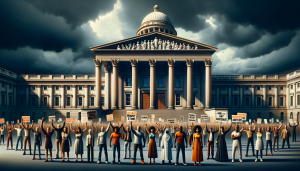Trump’s Tariffs Would Cut Budget Deficits by $2.8 Trillion, CBO Says

Overview of CBO Projections on U.S. Tariff Increases
The Congressional Budget Office (CBO) recently projected that the U.S. tariff increases would lead to a significant reduction in federal deficits, amounting to $2.8 trillion over the next ten years. This substantial decrease is anticipated through heightened customs revenue and reduced interest payments on federal debt. This projection notably supports the financial viability of President Donald Trump’s proposed tax cut bill, demonstrating that the increased tariffs could more than adequately compensate for the projected costs associated with the tax reductions.
Impact of Extending 2017 Tax Cuts
In a related report, the CBO analyzed the fiscal implications of extending the 2017 tax cuts, as outlined in the current administration’s tax and spending proposal. This extension would reportedly increase the federal deficit by about $2.4 trillion over the same decade. The analysis details that while federal revenues would decrease by $3.67 trillion, a reduction of $1.25 trillion in spending would lead to a net deficit increase, highlighting the challenges of managing long-term fiscal health.
Economic Effects of Tariffs
From January 6 to May 13, 2025, the new tariffs, including a 30 percent levy on imports from China and Hong Kong, and various other duties on goods such as autos, steel, and aluminum, are expected to diminish primary deficits by $2.5 trillion and slash interest payments by an additional $500 billion. Even when accounting for modest economic downturns, such as a slight dip in GDP and temporary spikes in inflation, the net deficit reduction remains robust at $2.8 trillion. Despite a projected real GDP lower by 0.6 percent by 2035 and a temporary increase in inflation by about 0.4 percentage points during 2025 and 2026, these impacts are seen as manageable and reversible over time.
CBO’s Support for Tariff Strategy
Proponents argue that the CBO’s findings underscore the underestimated potential for growth in productivity and investment due to the incentivization of onshoring manufacturing processes. The shift towards manufacturing from service sectors could potentially enhance economic efficiency significantly, as manufacturing jobs generally yield higher productivity. Additionally, the lack of a broad exemption process for the tariffs amplifies the expected revenue, providing a robust fiscal position against standard anti-tariff criticisms.
|
The CBO report suggests minimal expected retaliation from U.S. trading partners and maintains the effectiveness of the tariffs under a federal appeals court stay amid legal challenges. Portraying the tariffs as a conservative fiscal measure, the CBO emphasizes the strategy’s capability to foster revenue growth and reduce national debt with limited negative economic repercussions. This supports the notion that strategic tariff use, coupled with potential foreign concessions, could strengthen the U.S. economic stance globally.









No Comments